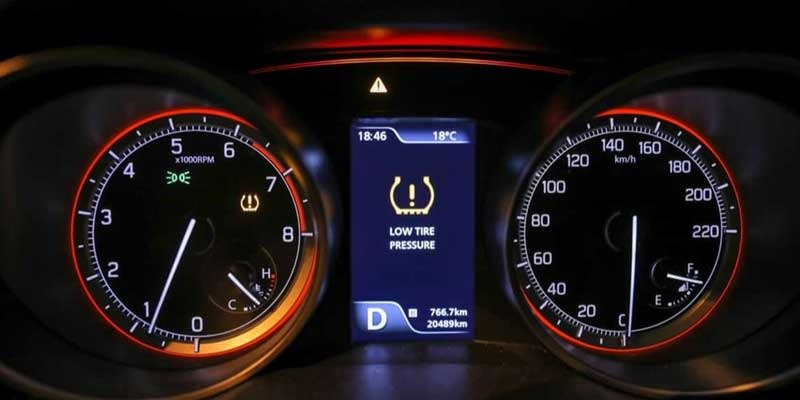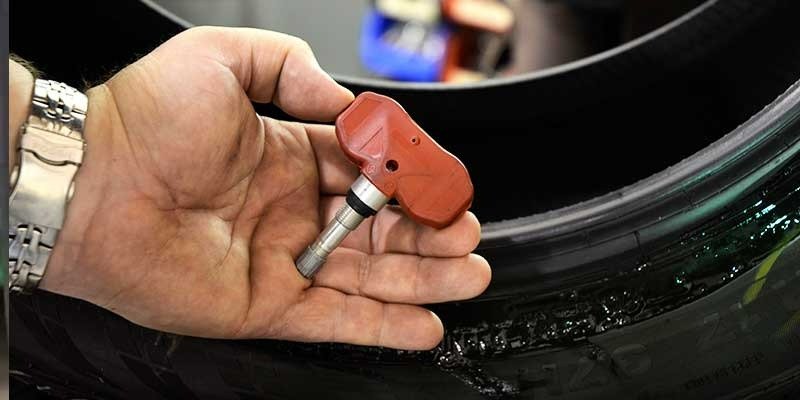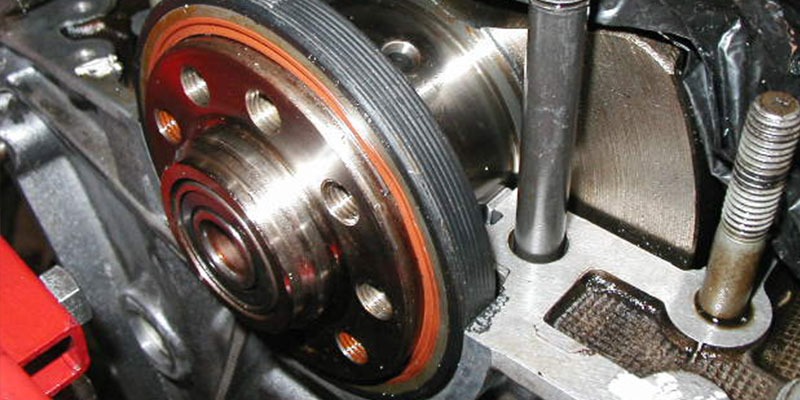What is Service Tire Monitor System Chevy (STMS), and how does it work?
STMS is a tire pressure monitoring system that alerts drivers when their tires are underinflated or overinflated. The system uses sensors embedded into each wheel hub to monitor the air pressure inside the tire. If the sensor detects a low or high-pressure condition, it sends a signal via radio frequency to the vehicle’s onboard computer. This information is then displayed on the driver’s dashboard.
STMS also helps reduce fuel consumption and improve vehicle performance.
Service tire monitoring lights usually illuminate when your tire pressure system needs adjustments. The following diagnostic article explains why the light may be turning on. These articles apply to the Chevrolet Silverado 1500 (1999-2006).
The tire pressure sensor light on TPMS is a light that alerts the driver of incorrect tire pressure. These sensors became particularly useful for cars at the end of the 1990s and are an important component of the first-generation Silverado 1500.
What does “Service tire monitor system” mean?

The TPMS sensor (Tire Pressure Monitor System) is designed to notify you when your tire pressure is low. It could lead to unsafe driving conditions. The light that is lit means that your tires may be underinflated. It can cause uneven tire wear and possible tire failure.
Is it safe for me to drive with the Service tire monitor system light on?
Driving with the TPMS Light on is unsafe. One or more of your tires are either under-inflated or overinflated. The proper tire pressure for your vehicle can be found in the owner’s manual or on a sticker on the trunk, door, or fuel door.
How To Reset Your Tire Pressure Light?

After correcting the low tire pressure, the tire pressure light should go off. If it is still visible on your dashboard, there must be some problem with the tire sensor. Follow the steps below to tire pressure light manually:
- For 10 minutes, drive at least 50 mph. It could cause the tire pressure sensor of your car to reset when you turn it on again.
- Turn the key to “on” while the vehicle is off. Do not start the car. Press the TPMS reset key until the tire pressure light blinks 3 times. Then, release the button. Wait 20 minutes before you start the car. The TPMS reset button can be found under the steering wheel. You can refer to the owner’s manual if you have trouble finding it.
- Inflate tires to 3 PSI above the recommended level, then completely deflate. Make sure you include the spare tire as it might have a sensor. After removing them, you can re-inflate them to the recommended tire pressure.
- Turn off the car and disconnect the positive battery cable. Turn on the car and start honking the horn for three seconds. It will turn off any remaining power. Next, reconnect the battery.
How to Reset the TPMS Sensors?

Remember to reset your tire pressure system after you’ve finished filling up your tires with air, inflating them (in the case of high PSI), and changing a tire on your car.
Sometimes, sensors might not be completely synchronized. In these cases, it is necessary to reset the service light by initiating a reset process.
Although unusual, the procedure is essential to reset the service indicator light.
- Park your vehicle.
- Turn the ignition key to RUN while the engine is off.
- The vehicle will go into reset mode, and you will be notified with two clicks of your horn. Turn the headlight switch four times between ON and OFF to reset the truck. It should take about three to four seconds.
- Take out all air from the front tire.
- Ten seconds after the tire is deflated, the truck horn should sound. After the truck horn stops sounding, you can then inflate the tire. You may need to repeat the process if the system has reset. Each beep means that the tire sensor has been synchronized with its monitoring system.
- Each tire must be re-tread.
- The horn will sound twice when the last tire has been inflated. It signals that the procedure is completed.
- Now it is time to turn the engine off.
- To fill each tire to the required pressure levels, use an air compressor
- Check the TPMS light before you start the car.
How to Replace the faulty TPMS sensors?
As we know, TPMS stands for Tire Pressure Monitoring System. It’s a computerized (in most instances) tire inflation valve, which measures tire pressure and transmits it to the vehicle’s computer.
A warning light is activated when the tire’s pressure drops below the set level on the sensor. It alerts the driver that the tire is underinflated.
It is important to remove the sensors before replacing your old tires with new tires.
The sensors can be damaged by normal corrosion in some cases. However, a skilled tire technician could also cause damage if the tires are not properly removed.
Follow these steps to replace the TPMS sensors without any damage:

- Remove the core of the valve from the TPMS sensor. Let the valve inflate.
- Use the socket and ratchet to remove the TPMS sensor grommet. Sometimes, a washer may be under the grommet to stop leakage.
- The tire rim should have the TPMS sensor valve recessed. The sensor will slide into the groove by snapping the bead onto your tire changer.
- To perform the procedure on both sides, use a regular tire changer.
- To prevent the tire from slipping, place it on the tire changer table.
- Lift the top bead to remove the wheel from its rim. Access the TPMS sensor by lifting it from the outside. You can remove the lower rim bead if you’re replacing it. If not, replace the upper bead.
- The rubber gasket, which comes with the kit, must be placed on top of the sensor valve to install the new TPMMS sensor properly.
- Place the tire sidewall in front of the valve hole in the rim. Next, push the sensor valve down and then move it up. The washer, if any, and the grommet should be held in one hand. Hold the other hand steady while you screw the washer into place.
- To determine the recommended pounds per inch to tighten TPMS sensor grommets, refer to the TPMS manual. After setting the torque wrench to the correct pressure, tighten the grommet following the manufacturer’s instructions.
- Inflate the tire to the correct pressure as you would normally.
If the problem persists, it may call for replacing your old tires.
What is the cost of new tires?

Tire costs range greatly depending on the type of tire you need. A low-end tire can cost as little as $50 for a small vehicle. If you have a large truck and need to purchase some beefy tires, it can cost you up to $1,000 per tire. This is how it works:
- Low-end tires are available for $50 to $150
- Mid-range tires are priced between $150 and $300
- High-end tires are available for as low as $350 to $1,000
These prices include the price of the tire. You will need to pay for installation and balancing when you get new tires. If you do not want your tires to be taken away by the installer, you may pay an additional fee.
What are the signs that your tyres may be failing?
You may have a problem with your tire pressure if you are constantly inflating or checking the level of your tires.
When it’s time to get rid of your tires, they will let you know. These are some basic signs.
- Low tire pressure: If your tire constantly loses air pressure, there is likely a small leak. You can either patch the problem or replace it.
- Use a penny to insert between your tread and the tire with Lincoln’s head down. You need new tires if you can see Lincoln’s head. Low tread can cause safety problems such as hydroplaning or low traction.
- Inequal tire tread is caused by misaligned tires, damaged suspension or improperly inflated tires. It doesn’t matter what. It is impossible to fix, and you will need new tires.
- Vibrations: Worn suspension parts or poor wheel alignment can cause strange vibrations and sounds. You may need to replace your tires if you have uneven tread wear.
- Bubbles – If you see a bubble on your tire’s side, it could be a product defect. You will need a new one.
- Cracked rubber: These cracks signify that the rubber has been degraded. You either have old tires, or you have improperly used tires.
These signs are indicators that your tires need to be replaced. If you have worn tires, it could also indicate a problem. It is recommended to replace your tires every six years.
Maintaining and Servicing the Service Tire Monitor System: Tips for a Safe and Smooth Ride
Regular Tire Pressure Checks: The Key to Optimal Performance
- Recommended frequency: Check tire pressure at least once a month or before long trips, as well as during significant temperature changes.
- Correct tire pressure levels: Consult your vehicle’s owner’s manual or the driver’s side door placard for the manufacturer’s recommended tire pressure.
- How to adjust tire pressure: Use a reliable tire pressure gauge to measure pressure, and a portable air pump or visit a service station to inflate tires as needed.
Inspecting TPMS Sensors: Keeping a Watchful Eye
- When to inspect sensors: Have TPMS sensors inspected annually or during regular tire maintenance appointments, such as rotations or alignments.
- What to look for during inspection: Technicians should check for signs of corrosion, damage, or battery depletion in the sensors.
- Cleaning and maintenance tips: Ensure that the sensors are clean and free from debris, and replace any damaged or corroded components as needed.
Servicing the TPMS Control Module: Keeping Your System in Top Shape
- When to service the control module: Consult your owner’s manual for recommended maintenance intervals or seek professional advice if you encounter persistent warning messages.
- Common maintenance tasks: A technician may update the control module’s software or perform a system reset to address minor issues.
- Seeking professional help for module-related issues: If you suspect a problem with the control module, consult a qualified technician to diagnose and repair the issue.
Frequently Asked Questions
Here are some Frequently Asked Questions on Service Tire Monitor System Chevy.
What is the maximum driving distance with a TPMS light on?
If your tire pressure is low and no leaks are present, you can drive the car for at least 10 miles at over 30 mph to warm it up and then wait for the warning lights to turn off.
What happens if the TPMS sensors aren’t replaced?
Motorists who change their tires for the changing seasons must ensure that the TPMS sensors have been reactivated and recalibrated every time. If you don’t do this, your vehicle’s TPMS won’t work properly and could cause the TPMS light to come on.
Is it safe for me to drive with the Service tire monitor system?
Driving with the TPMS Light off is unsafe. One or more of your tires are either under-inflated or too high. The correct tire pressure for your vehicle can be found in the owner’s manual or on a sticker on the trunk, door, or fuel door.
What does a Service tire monitor on a Chevy Traverse mean?
The tire in question is 25 per cent lower than the recommended air pressure. Sometimes, your tires will be fine.
What is the cost of a tire monitor system repair?
Depending on the car model, it usually costs between $80-$140 for a tire pressure sensor to be fixed. The cost of replacing the sensor might be covered if your car is still under warranty. If you think this is true, check with your dealer.
What is the cost of a tire monitor service?
The service kit will cost $5-$10 per rim on most vehicles. To reset and check the sensor system, you will need a special TPMS tool and additional time. Depending on the vehicle, replacing pressure sensors can range from $50-$250.
How can I reset my Service tire Monitor system?
Press the TPMS reset key until the tire pressure light blinks 3 times. Then, release it. Wait 20 minutes before you start the car. The TPMS reset button can be found under the steering wheel. You can refer to the owner’s manual if you have trouble finding it.
Conclusion
The Tire Pressure Monitoring System (TPMS) helps keep your tires inflated correctly. It also helps prevent unnecessary wear and tear on your tires due to improper air pressure. However, many drivers fail to take advantage of the TPMS feature because they don’t know how to use it. Therefore, we hope our article has helped you understand what a TPMS is and how to use it. We also hope you find out why you should reset or replace the TPMS Sensors in your vehicle.

My Name is Christopher Angels, and I am a postgraduate in mechanical engineering. Cars have always excited me as a child, and soon I decided to dive into the world of cars by pursuing mechanical engineering. I also worked as a Mechanic for over 3 years to understand Cars’ anatomy and how each part contributes to its working.
My Name is Christopher Angels, and I am a postgraduate in mechanical engineering. Cars have always excited me as a child, and soon I decided to dive into the world of cars by pursuing mechanical engineering. I also worked as a Mechanic for over 3 years to understand Cars' anatomy and how each part contributes to its working.










